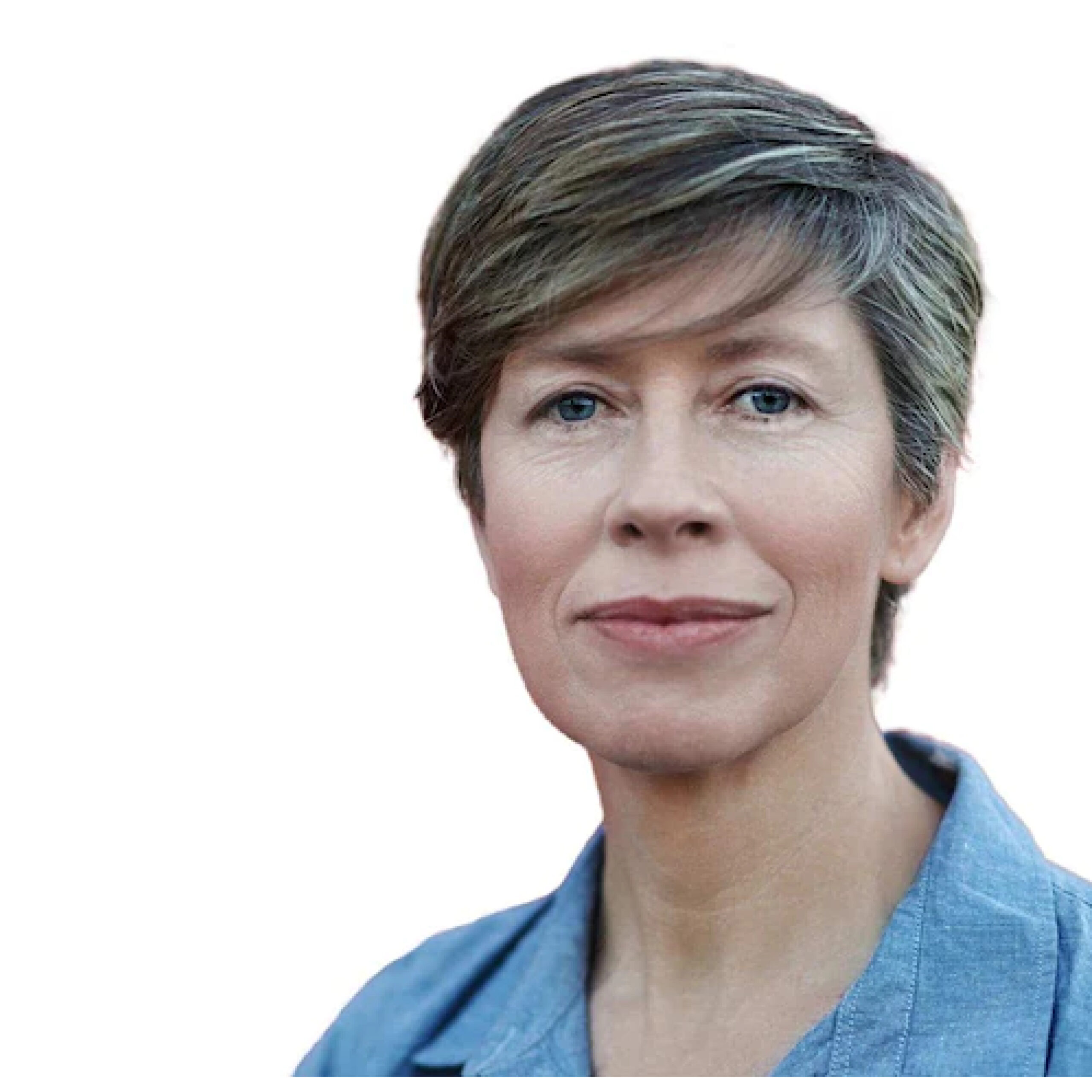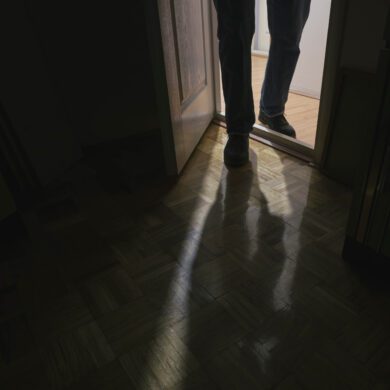Kevin* wasn’t always an angry man, at least not in the early years of his marriage. Yes, he’d had a difficult home life as a child, but when he met his wife and settled down to have children, he thought that his childhood trauma lay firmly behind him. It was only when the kids reached their teenage years, and family finances became strained, that the darkness came flooding back.
“Anger is a very frightening thing, when you can’t control it,” he says from his home in regional Victoria. “Mine was a kind of seething anger, and resentment. Dark moods of being negative and aggressive, and angry.”
The former teacher perpetrated emotional abuse towards his wife, but was never physically violent. But the damage still cut deep.
“We unload a lot of anger on our loved ones, for some reason,” he says. “We don’t do it to strangers, or people we like or want to impress. We take out our anger on the people we love.”
Anger is a very frightening thing, when you can’t control it.
All over the country, there are tens of thousands of men directing their rage towards women they profess to love. The violence has reached epidemic proportions, with one in six Australian women experiencing sexual or physical violence since the age of 15, and one in four reporting emotional abuse. Shockingly, this year in Australia, 43 women have already died at the hands of men, according to the Femicide Watch Project.
Figures released this week show that across NSW alone, there were more than 36,000 cases of domestic-violence-related assault in the year to March – a 15 per cent increase in the past five years. However, that figure masks skyrocketing rates in some areas. For example, there was a 46 per cent increase in domestic-violence assaults in Bourke over the past two years and a nearly 60 per cent increase in North Sydney.
It appears that no matter the demographic – or how rich or poor – the numbers are heading in the wrong direction.
In the past few weeks, a paroxysm of murderous violence against women, and nationwide rallies, capped off by statistics like these, have put the issue of domestic violence back in the spotlight.
For some in the sector, this moment already feels like Groundhog Day – generating a familiar loop of summits and declarations from familiar faces – and yielding a disappointing lack of new ideas, and commitments.
But there is one thing that is almost universally agreed upon: we know too little about the men who perpetrate abuse and what motivates them.
We know the way they abuse well enough, thanks in no small part to the advocates who’ve shone a light on coercive control. We know the various kinds of abuse: financial, emotional, technological, sexual and physical.
And most of us can agree that culture that permits and even valorises violence is a factor: the alpha-male tropes that enable men to dominate and control women, the pornographic norms that objectify and humiliate, the stereotypical gender straitjackets that empower and shame, all at the same time.
But if we really want to protect women, now and in the future, we need to dig deeper and understand what drives the violence against them in the first place. This doesn’t mean making excuses for men, but when it comes to domestic and family violence, knowing the ‘how’ and the ‘what’, without grappling with the ‘why’ feels like a mistake.
The half-life of trauma
There is one expert who understands the psyche of a male perpetrator better than most. Dr Hayley Boxall is a criminologist at the Australian National University, who has been researching domestic and family violence for 13 years. In that time, she says, conventional wisdom around men and why they perpetrate intimate partner abuse has changed.
“Ten years ago, people were saying these men clearly don’t love their partners, and that’s why they perpetrate violence against them,” she says. “By their behaviour, it’s clear they don’t love them, and have little respect for them.”
Ten years ago, people were saying these men clearly don’t love their partners, and that’s why they perpetrate violence against them.
Recent research shows it’s more complicated than that, she says.
In a paper she and a team of researchers published in 2022, Boxall found that among men who had committed that most extreme form of abuse, intimate partner homicide, there wasn’t one “type” of abuser, but rather several distinct categories.
The first consisted of middle-class men who were well-respected in the community but were controlling and abusive behind closed doors; the second included men who had significant histories of trauma and abuse, and who had often come into contact with the justice system in the past as a result; and the third comprised of men who were typically older and had shown few signs of aggression in their life – until a significant life event or stressor triggered a murderous impulse.
Boxall’s research suggests that abusers are far from an homogenous group. However, there are some common factors, with many men who use violence having experienced violence themselves.
“So, we’re dealing with a cohort of people who have learned to use violence in their homes, they have their own histories of trauma,” says Boxall.
We’re dealing with a cohort of people who have learned to use violence in their homes, they have their own histories of trauma.
David Roe is a Yawuru-Warumungu man, who grew up in Darwin, whose history of trauma began early. I’m introduced to him, through a First Nations-run programme in Victoria called Dardi Munwurro, which is aimed at Indigenous men who use, or are at risk of using, family violence
The morning we talk, Dardi has just had a VIP visit – from Victoria’s newly appointed parliamentary secretary for men’s violence, Tim Richardson MP. The appointment has already provoked a backlash from some quarters – critics who warn the naming of the portfolio suggests an anti-men attitude. But those working in the violence prevention sector have welcomed the novel approach.
David came to the residential programme at Dardi, after spending nearly 18 years in total in prison, mainly for drug-related crime, but also family violence. Between 2006 and 2014, he directed his violence at his girlfriend, who’s also the mother of his two children.
“[The violence] became so natural. I think, just from the start [of the relationship], and when I was starting to use [amphetamines], there was physical violence. Throwing her around, pulling her around by her hair. It was a natural thing. It was just the kind of stuff that happened between us.”.
David says it’s only now, so many years later, he can understand how it impacted her, and their children.
“I just never really thought about it, until I went to jail this last time, and got clean. This was my longest sentence. I’ve always been under the influence of drugs. But now, I’ve got my brain cells back, and my feelings. I could finally feel all these emotions. I was remorseful. Before I used to just see her as this woman who was trying to keep my kids away from me, and I was really angry. But now I think, well, she was a good mother. She always looked after them. I see the kids now every weekend, and I’m reconnected with them.”
I just never really thought about it, until I went to jail this last time, and got clean.
David’s children now are roughly the same age that he was when he was first sent to prison – the notorious Don Dale Youth Detention Centre in the Northern Territory. The conditions there were the subject of a royal commission seven years ago. It was shut down last year.
David calls it an inhumane place. Held there from the age of 14, he recalls being locked in solitary confinement. “With my brain not developing, I just had no respect for the law. Once I hit manhood, at 16 or 17, I started using amphetamines, and everything just spiralled from there.”
It was only in 2017 when he entered the Victorian prisons system, where he undertook drug and alcohol counselling and completed 27 individual one-on-one counselling sessions, that he finally addressed his past.
Talking about the childhood trauma of men who commit horrific abuse can feel uncomfortable – as though it’s somehow defending indefensible behaviour. But childhood trauma, exposure to family violence in the home, together with drug and alcohol use, gambling, attachment disorder and using violence as a younger person, crop up with a regularity that can’t be ignored, according to experts.
Although he won’t go into details, Kevin, the former teacher in Victoria who you met earlier, admits his difficult home life as a child meant he carried “psychological baggage” into adulthood. Attending an all-boys school before progressing to university only compounded a lack of emotional awareness.
“I had very little contact with women, really,” he says. “I think what happens [is] you find somebody you can get married to, and you imagine that’s going to solve all your issues. I think a lot of other men have the same story. You think everything’s going to be fine: I found someone to look after me, so that’s all behind me. All that depression, anxiety, anger. But then, when the kids are teenagers, and there’s financial stress, it gets difficult. And that’s when my abuse really started.
You find somebody you can get married to, and you imagine that’s going to solve all your issues… I found someone to look after me, so that’s all behind me.
“For me, and other men I’ve met, there’s a false feeling of powerlessness. ‘Poor me. I’ve done all this for them, and now look at how they treat me.’ We used to call it being in the victim hole. The horrible soup that goes into men’s minds when things are going against them.”
Helping men to delve into this ‘horrible soup’, as Kevin describes it, is Mark Kulkens’s job. A clinical psychologist, he has led over 2,500 hours of therapeutic group work with men who have used violence. He’s worked in prisons, with men at high risk of violence; in community settings, on men’s behaviour change programmes; and most recently with Dardi Munwurro, where David now works.
He has, he says, stepped away from mainstream services, because “we’re coming at the problem too much from the perspective that violence is a choice. So, don’t choose it. If you choose it, you are a bad person. We’ve stopped seeing the traumatised child, the damaged and heartbroken person. Don’t get me wrong, that doesn’t excuse the violence. But we need to understand this trauma, without accepting the violence.
“We’re coming down hard on perpetrators. The slogans are all about being tough on crime, holding them accountable. Using your powers. The system is using violence to stop violence.”
The system is using violence to stop violence.
For three years, retired social worker Marg Chipperfield ran one of the few long-term programmes for perpetrators, called ‘On Track’. She says the drivers behind the men’s violence and abuse were varied, but encompassed trauma and dependence. Of the 16 men in one programme, she says: “I think three had post-traumatic stress. A couple had alcohol and drug dependencies. One had an acquired brain injury.
“Basically, they were all men who were violent, and wanting control, because of an underlying fear of being alone. One of the hardest jobs was to get them to dig down to those feelings, and own them.”
Adds Mark: “The vast majority of men that I’ve met won’t acknowledge that they’re violent, not until we’ve done a fair bit of work anyway. They’re seeing it from different perspectives.
“From the victim’s point of view, [these] sound like excuses and justifications. From the perpetrator’s perspective, everybody they know does it. ‘I’m just trying to be heard. Giving as good as I get. You hurt me more than you.’ These sorts of minimisations, and blaming, are common.”
From the victim’s point of view, [these] sound like excuses and justifications.
Of course, not every instance of abuse can be traced to childhood trauma, mental health problems or alcohol and drugs – and not all men who experience abuse as children go on to be perpetrators.
And there remains a cohort of high-risk offenders that require a different category of response – primarily intervention to stop the immediate risk of lethal harm.
Some experts would like to see the establishment of Fixated Threat Assessment Centres, where high-risk or serial offenders, who are jealous, controlling and fixated on their partners, are treated with the seriousness of other criminals with obsessive fixations, like terrorists or stalkers.
The only thing that is certain is that there are no simple answers, and more research is needed.
“We’re dealing with a very diverse population,” confirms Dr Boxall. “There is no one type of domestic violence perpetrator, there is no one type of homicide perpetrator. There are differences between them in terms of their childhood experiences, the motives, the things that they get out of the violence, their brains look different. It’s really, really diverse. And so while we’re trying to look for this one perfect thing that cuts across that diversity, we’re stopping ourselves from doing anything.”
There is no one type of domestic violence perpetrator, there is no one type of homicide perpetrator. There are differences between them in terms of their childhood experiences, the motives, the things that they get out of the violence…
She wants to see a diverse range of programs developed to deal with different cohorts. The current mix is lacking, she adds. “We’ve got basically no programmes targeted at young people who use violence, when those statistics are increasing… And just as we know that drugs and alcohol have a really strong role to play in domestic violence, so does gambling. But there are no gambling programmes that have an intimate partner violence element.”
So, what works?
For Kevin, it was long-term group counselling that cut through like nothing else had.
“Because when another man points out to you, what you’ve just said, or what you’ve just revealed, it means a lot more than a psychiatrist, somehow,” he says. “If you had an issue, something burning up inside of you, you’d talk to the group, and someone played the role of telling you what they heard you say.
“So it reinforced the comprehension of what you’re doing. Then someone else might pipe up and say, ‘I heard a lot of avoidance’. Because you start off with, “Oh, it’s not so bad”. Or, you know, “It’s her, it’s not me”. But gradually that gets eroded over the weeks.”
He adds that it is also vitally important to change broader cultural norms around masculinity and teach young boys emotional coping strategies. “I’ve seen the new programmes come around, teaching boys about respectful relationships. You know, be good to the girls, don’t push them, get permission for anything you do.
“But nobody says to them, ‘What’s going to happen when your girlfriend runs off with somebody, and dumps you?’ Boys don’t get educated about that. If a boy dumps a girl, she goes out and talks to her friends. If a girl dumps a boy, he’s completely full of shame. Society says you’re a reject, you’re a failure. That’s how I started, y’know. Rejection is just something people don’t know how to deal with.”
Rejection is just something people don’t know how to deal with.
Chipperfield, who has written a book called No Buts (its title a reference to men’s propensity to minimise their violence) agrees that intervention needs to start early, before the abuse escalates to a level of lethal harm. “We’ve got to get to them early, before their need for control increases, as it tends to. A few weeks ago, one of the men I worked with sent me a text. I think three women had been killed in the days before that. And he wrote, “Thank god I got help years ago, Marg. That could have been me.”
David Roe credits his experiences alongside fellow Indigenous men in the programme run by Dardi Munwurro, as critical to his rehabilitation. “We all acknowledge individually we want to be better, for ourselves, so that we can look after our families. We’re all there for one reason. And we can talk about trauma. We can’t change the past, but we can change the future. We can be that good father. That better partner. We’re there for the healing.”
When I ask David what he’d say these days to someone who’s using violence to frighten and control their partner or family, he says, “At the end of the day, if you love somebody, you don’t want to push them away. You want to bring them closer. Acting that way. It’s really toxic. They shouldn’t be feeling that way. The partner and the kids, they’ll remember that for the rest of their lives.”
Are you or someone you know experiencing violence? Call 1800 RESPECT for help.
Are you at risk of perpetuating violence? Call Men’s Referral Service on 1300 766 491.













No Comments